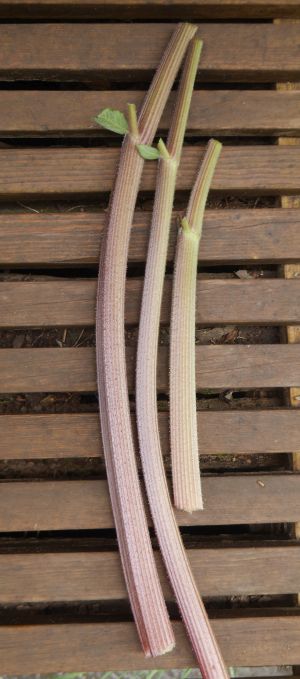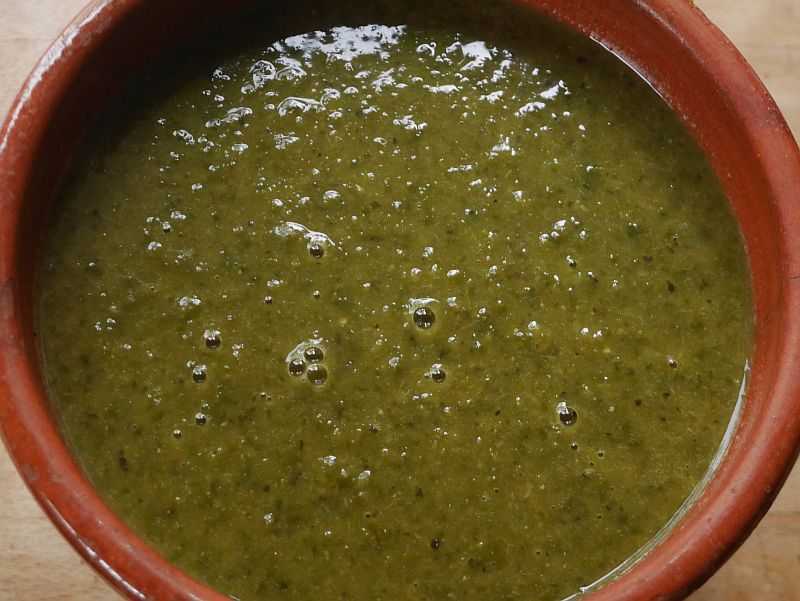This week’s perennial veg stir-fry with soba (buckwheat noodles), Japanese style contained the following (roughly left to right in the picture):
Nettles / stornesle (Urtica dioica)
Burdock / storborre roots (Arctium lappa); stored in the cellar
Wapato tubers (Sagittaria latifolia); stored in the cellar in water
Ramsons / ramsløk (Allium ursinum)
Caucasian spinach / stjernemelde (Hablitzia tamnoides)
Giant bellflower / storklokke (Campanula latifolia)
Himalayan water creeper (Houttuynia cordata) – reddish shoots
Sand leek / bendelløk (Allium scorodoprasum)
Garlic / hvitløk (Allium sativum)

Tag Archives: storklokke
The 2021 Selfies with a 20-year old Udo
This year’s udo (Aralia cordata) selfie pictures, probably the highest ever with a flowering spike way above my head. I harvested about 1/3 of the shoots in the spring. This is my largest herbaceous perennial vegetable that was planted here 20 years old ago! It has never had any fertiliser and is growing on the steepest slope in my garden. Ostrich fern (strutseving) and giant bellflower (storklokke) can be seen in the foreground.
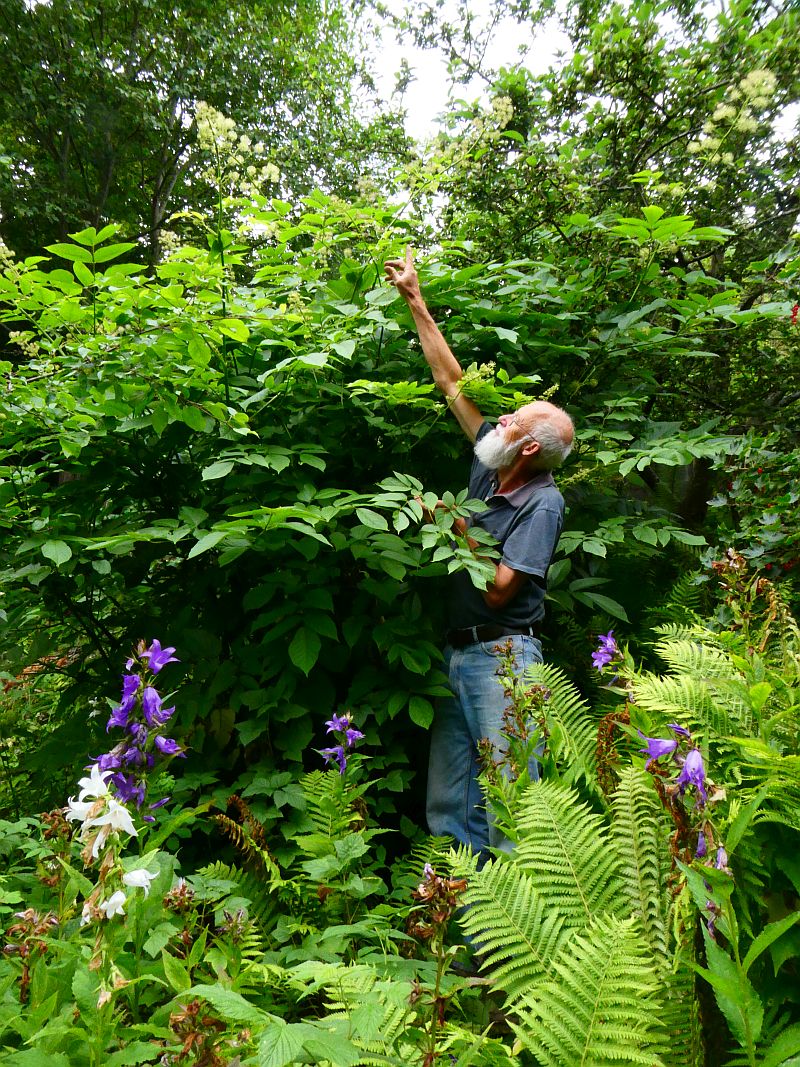
Early June Greens and Whites
Presenting some of this week’s perennial greens and, in the case of the blanched Hosta shoots, perennial whites!
Hosta sieboldiana with ramsons / ramsløk (Allium ursinum) and giant bellflower / storklokke (Campanula latifolia)

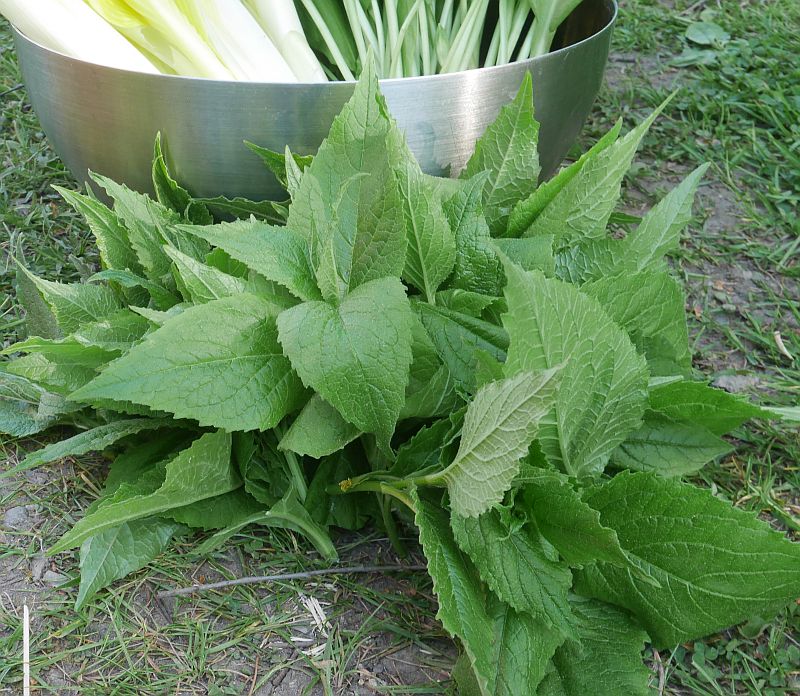
Forced March Perennial Greens
In order to lengthen the season for harvesting of perennial vegetables, I dig up roots of a selection in the autumn and plant them in garden soil in large buckets (which I have a surplus of through my Allium project, now moved to the botanical gardens). As I explain in the video, all of these can be stored outside exposed to the cold as they are very hardy (minimum about -20C here), but some get a head start by moving into my cold cellar where they start growing slowly in the dark. Welcome to my living room:
These were the forced veggies used one day last week, from top left and across – Heracleum sibiricum (hogweed / bjørnekjeks); Campanula latifolia (giant bellflower / storklokke); Myrrhis odorata (sweet cicely / spansk kjørvel); Taraxacum officinale (dandelion / løvetann); (bottom row): Allium angulosum; Ficaria verna (lesser celandine / vårkål); Allium flavescens and Armoracia rusticana (horseradish / pepperrot); (centre right): wild buckwheat / vill bokhvete shoots – Fagopyrum tataricum)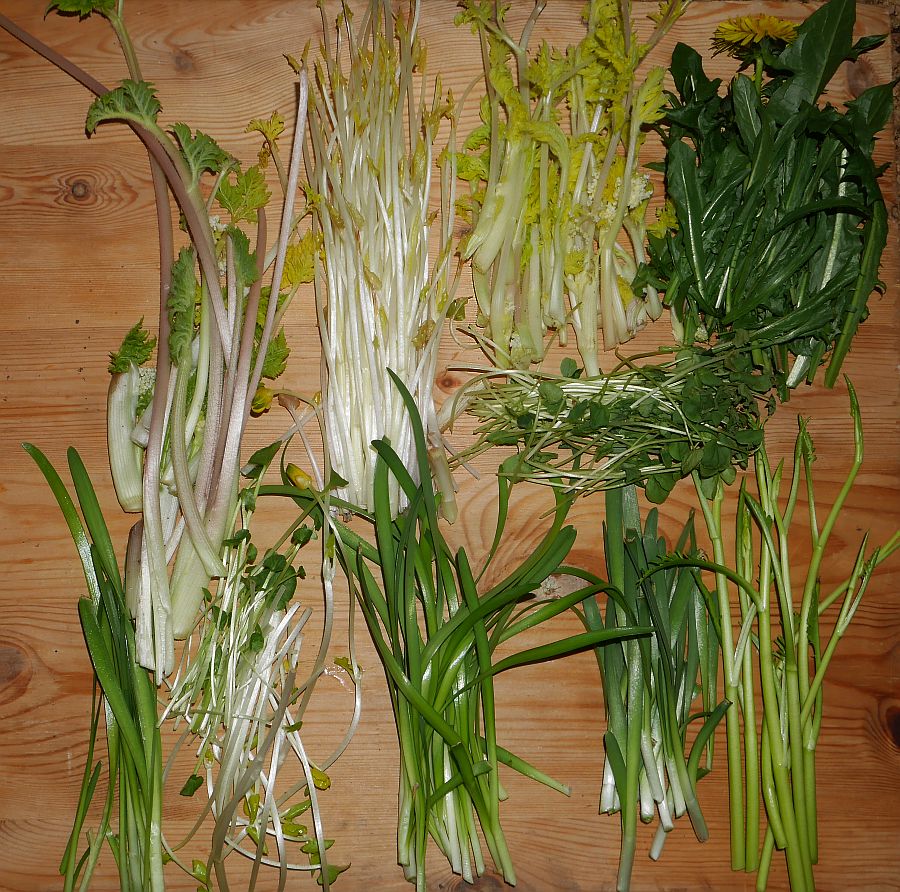
Norwegian quinoa and swamp greens medley
13th June 2020 perennial greens were stir-fried and served with quinoa and served with Allium ursinum flowers.
Allium validum (swamp or Pacific onion) with flower shoot
Saxifraga pensylvanica (swamp saxifrage)
Gunnera tinctoria
Asparagus officinalis (asparges)
Crambe maritima (sea kale / strandkål broccolis)
Perennial kale “Walsall Allotments” (flerårig kål)
Campanula latifolia (giant bellflower / storklokke)
Aster macrophyllus (big-leaf aster)
flowering shoots of various Russian Rumex acetosa cultivars (sorrel / engsyre)
The greens were stir-fried with chili and garlic and served with Norwegian organic quinoa with ramsons (ramsløk) flowers:


Garden wild green soup
Last night we made a green pea soup and apart from the Hablitzia (Caucasian spinach / stjernemelde), I used perennial vegetables growing in a wild part of the garden. With little or no help from me there’s a bounty of wild edibles in this area under wild hazels (Corylus avellana) and this made for a delicious pea soup with masses of greens.
Campanula latifolia is documented as used in spring soups in the 16th century in my area in Norway and Heracleum shoots are also a tradional soup ingredient, in particular Russian borsch now thought of as a beetroot soup was originally made with hogweed shoots.
Today’s perennial catch
23rd April 2020 perennial greens used in a delicious quiche (eggepai):
Hablitzia tamnoides (Caucasian spinach / stjernemelde)
Myrrhis odorata (sweet cicely / spansk kjørvel)
Rumex acetosa (sorrel / engsyre)
Campanula latifolia (giant bellflower / storklokke)
Urtica dioica (stinging nettle / brennesle)
Allium senescens
Heracleum sphondylium (common hogweed / kystbjørnekjeks)
Aegopodium podograria (ground elder / skvallerkål)
Naturalised Giant Bellflower
No doubt introduced by the previous owners here as an ornamental and despite the fact I spent a lot of time trying to eradicate it from parts of the garden, Campanula latifolia (giant bellflower / storklokke) is nowadays one of my most important springtime vegetables used both cooked and raw. It has naturalised under Hazel in part of the garden! Always nice to see how plants find their own way to the best spots it grows happily alongside Aegopodium podograria (ground elder / skvallerkål). See the excerpt from my book Around the World in 80 plants below.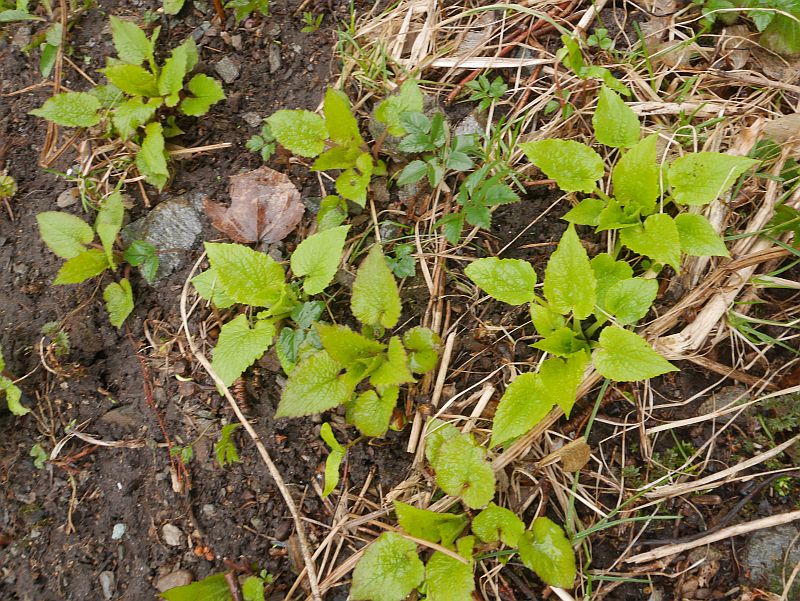
 Here is the excerpt from Around the World in 80 plants (I’m happy to send signed copies within Norway). “When I first moved to my present garden, there was one weed that I struggled to eradicate from my cultivated beds, Campanula latifolia or giant bellflower. The roots in particular were almost impossible to dig out, having a knack of germinating in the most difficult places. Then, one day I was reading the Norwegian book “Gratis Mat av Ville Planter (Free Food from Wild Plants; Holmboe, 1941). I learnt that my worst weed had been wild gathered for food by farmers in my area in the 17th century, a tradition which probably died out soon afterwards. The leaves and stems were collected in springtime and made into a soup. Similar stories have also survived from other parts of Norway and Sweden. Storklokke (literally large bell) is considered to be one of the most commonly used wild food plants in the past in Norway. Both the leaves and roots were used, the latter also ground and added to bread.”
Here is the excerpt from Around the World in 80 plants (I’m happy to send signed copies within Norway). “When I first moved to my present garden, there was one weed that I struggled to eradicate from my cultivated beds, Campanula latifolia or giant bellflower. The roots in particular were almost impossible to dig out, having a knack of germinating in the most difficult places. Then, one day I was reading the Norwegian book “Gratis Mat av Ville Planter (Free Food from Wild Plants; Holmboe, 1941). I learnt that my worst weed had been wild gathered for food by farmers in my area in the 17th century, a tradition which probably died out soon afterwards. The leaves and stems were collected in springtime and made into a soup. Similar stories have also survived from other parts of Norway and Sweden. Storklokke (literally large bell) is considered to be one of the most commonly used wild food plants in the past in Norway. Both the leaves and roots were used, the latter also ground and added to bread.”
It was the nephew of Bishop Gunnerus (after whom the genus Gunnera was named) who published this in Norway’s first flora published 3 years after the Bishop’s death! It was stated that “storklokke” deserves to be considered as one of the best springtime greens! I totally agree! Thanks to the previous owners (Johansen) for planting it for me!
Bellflower-chokes / Storklokkeskokker
My favourite foraging author “(Samuel Thayer’s) favourite dandelion vegetable is what he calls dandelion crowns, as named originally by Euell Gibbons (1961). I prefer to call them dandichokes, as both these and artichoke hearts are located below the flowers. In the early spring, the very young flowers appear at the surface. The dandichoke is just the self-blanched crown between the top of the root, which is a bit below the surface, and the developing flowers. Although small and difficult to clean, they are very tasty”. See the picture below!

The same applies to another of the 80 in my book, Giant Bellflower (storklokke) which also has a delicious (sweet tasting) self-blanched stem between the root and the surface….bellfower-chokes or, even better in Norwegian, storklokkeskokker! I discovered this accidentally last year! I had earlier noted in my book the sweeter tasting spring shoots after blanching (covering to excude light).

Tor Smaaland’s “Your Dream Garden” from 2004
I loved his amusing description of me and my garden (first in Norwegian below and then translated):
«Hage til å spise opp: Som Norges kanskje eneste moderne ikke-munk har engelskmannen Stephen Barstow brukt de siste tiåra på å anlegge et slags fri klosterhage ved Malvik utenfor Trondheim med noe mellom 1500-3000 planter, avhengig av hvordan vinteren har fart over hagen. Her er 30 av hans favoritter – og ganske uventet bruk av dem» ;)
(Garden to be eaten up: As perhaps Norway’s only modern non-monk, Englishman SB has over the last 10 years created a kind of free style monastery garden in Malvik outside of Trondheim with somewhere between 1,500 and 3,000 plants, dependent on the ravages of the winter. Here are 30 of his favourites and their rather unexpected uses) You will notice quite a few of the plants that finally ended up in my book and many of which I now call Edimentals; for example: variegated ground elder (variegert skvallerkål), nodding onion (prærieløk), seiersløk (Allium victorialis), udo (Aralia cordata), giant bellflower (storklokke), daylilies (dagliljer), Hosta, golden hops (gulhumle), Malva (kattost), ostrich fern (strutseving), Bath asparagus (Ornithogalum pyrenaicum), bistort (ormrot), rubber dandelion (gummiløvetann), bulrush (dunkjevle) and nettles (nesle).






